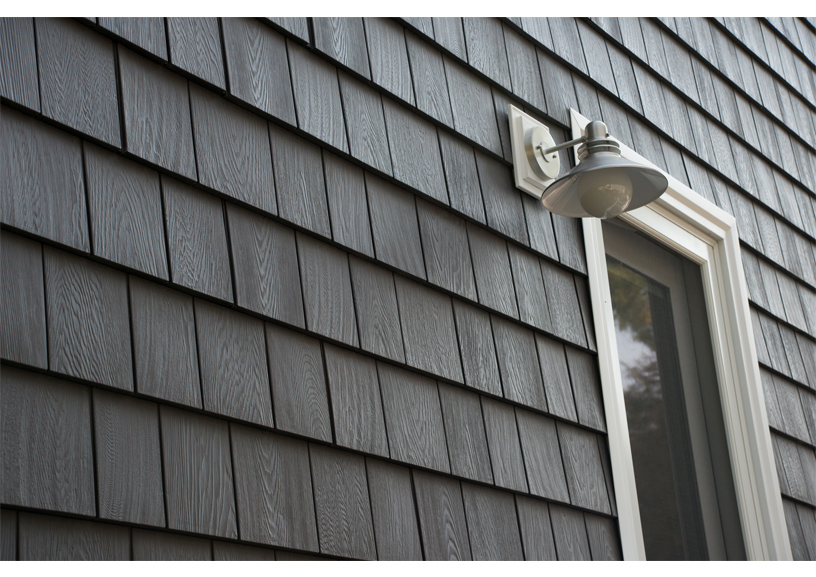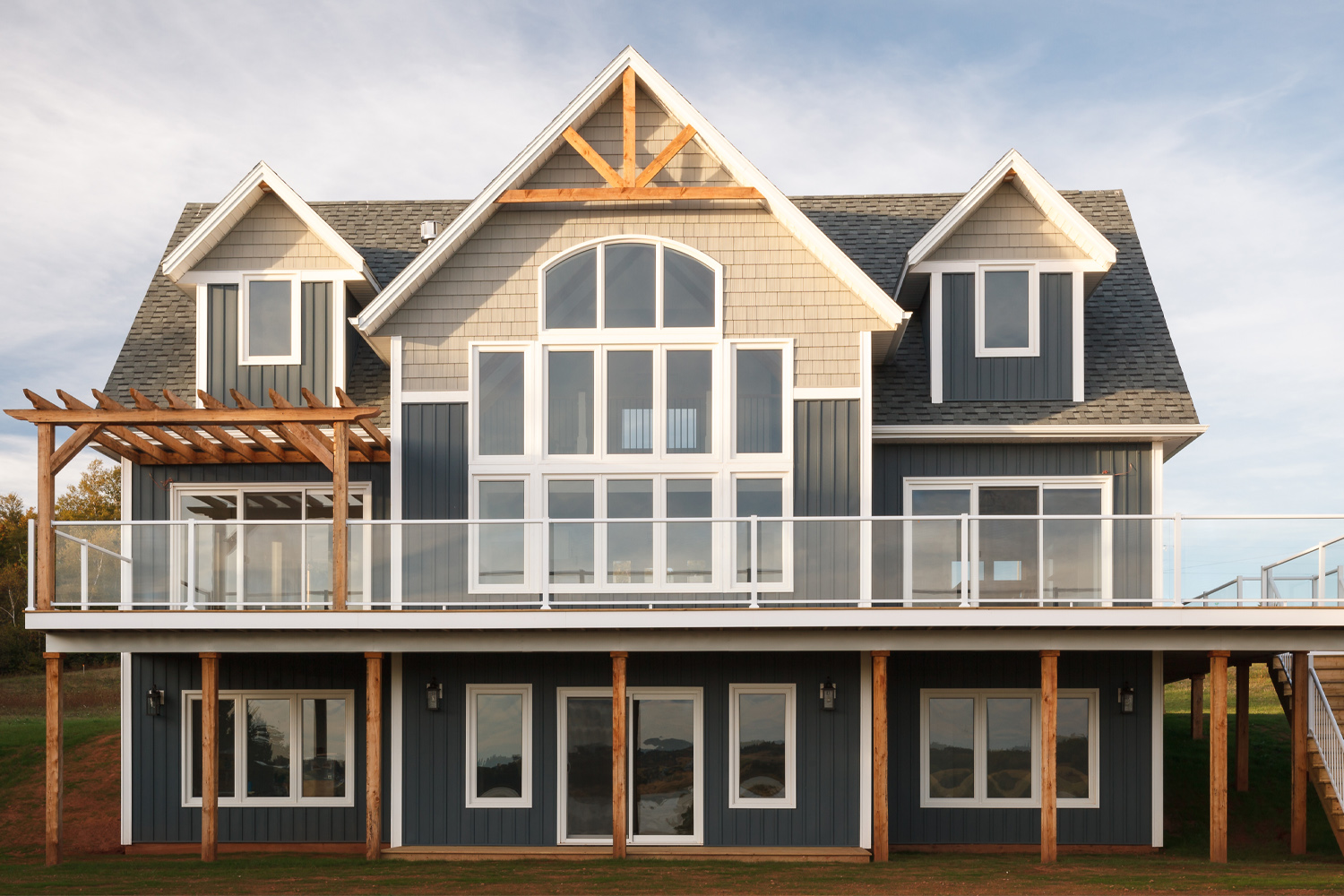The home’s exterior offers a host of product options, with one of the most important being which material to choose for the siding. The decision impacts not only the overall look of the house, but also its durability, upkeep, performance, and more.
Fiber cement has a reputation as a premium material, but there are many applications and situations in which vinyl is the ideal option for many homeowners.
Here are some considerations when weighing vinyl siding vs. fiber cement siding:
- Moisture resistance: Though fiber cement is durable, it’s much more prone to moisture absorption than many people realize, and if it absorbs water, over time its matrix may expand and degrade, causing its paint to fail. To avoid wicking water, fiber cement can’t be installed in contact with a range of surfaces, including the ground and masonry. Vinyl, on the other hand, does not absorb moisture, and therefore does not have restrictions about installation against the ground and other materials.
- Affordability: As a premium option, fiber cement often falls on the higher end of the siding cost spectrum, depending on brand and product. Vinyl siding has a much broader range of pricing options, offering some of the most affordable profiles on the market up to more premium options with more robust features or insulated backing. In other words, vinyl offers a little something for every budget.
- Authentic looks: Vinyl siding also offers wood grains and shadow lines to evoke the look of cedar. More premium vinyl siding, such as Foundry Specialty Siding™ Grayne Shingle, for example, boasts even deeper grains and richer, weathered colors for increased curb appeal.

- Painting: Some fiber cement products come with factory-applied colors, but others only come primed for painting on site. Vinyl siding is manufactured with through-body color and requires no painting throughout its life.
- Windload: Though lighter in weight, many vinyl siding options offer high windload resistance. Exterior Portfolio Siding™, for example, comes in options with wind resistance of up to 180 mph. Fiber cement may require face-nailing to achieve certain wind resistance ratings, taking away from the aesthetic.
- Airflow: Vinyl siding sits off of the wall, so it allows for air movement between the siding and the wall sheathing, promoting drying and reducing the chance of mold and other moisture damage.
- Warranty: Warranties are all about the fine print, so be sure to read them closely. For example, one fiber cement paint warranty is pro-rated and the fade coverage is for only three years. Vinyl siding warranties vary, but often surpass that of fiber cement. Exterior Portfolio comes with an industry-leading double lifetime warranty.
- Sustainability: Vinyl siding sometimes gets a bad rap in the green building community, but the numbers tell a very different story. Throughout its life cycle, vinyl releases significantly fewer toxic chemicals into the environment than other siding materials and has a lower overall environmental impact. Based on analysis using the BEES online software, vinyl siding has 79% less impact on global warming than fiber cement. (Learn more here.)

One final consideration when it comes to comparing vinyl siding to fiber cement is simply versatility. Vinyl’s diverse range of profiles, colors, textures, and performance levels means there’s a little something for every home, no matter the location, style, or budget. To see this for yourself, browse the siding and trim brands from Westlake Royal Building Products here.

